








The magazine of the photo-essay

Feb 2017 back issue



by Carol Beckwith and Angela Fisher
“A free, really high quality photo-essay magazine. Fabulous!”
Stephen Fry. British actor, writer and film & documentary maker

This seminal volume on the indigenous African Dinka group is a landmark
documentation of a vanishing people in war-torn Sudan. World-renowned
photographers Angela Fisher and Carol Beckwith have devoted their lives to
documenting the rapidly disappearing ceremonies and cultures of the indigenous
people of Africa. In breathtakingly poignant images, they present a story that started
with their first visit to the Dinka thirty years ago. Living in harmony with their cattle,
the Dinka have survived years of war only to find their culture on the brink of
vanishing forever. Where the White Nile River reaches Dinka country, it spills over
11,000 square miles of flood plain to form the Sudd, the largest swamp in the world.
In the dry season, it provides abundant pasture for cattle, and this is where the
Dinka set up their camps.

Dinka Cattle Camp, South Sudan. In the wut (cattle camp), countless herds of animals with majestic lyre-shaped horns
stretch as far as the eye can see. Young dinka men and women spend their time surrounded by their beasts, living in
perfect harmony with them.
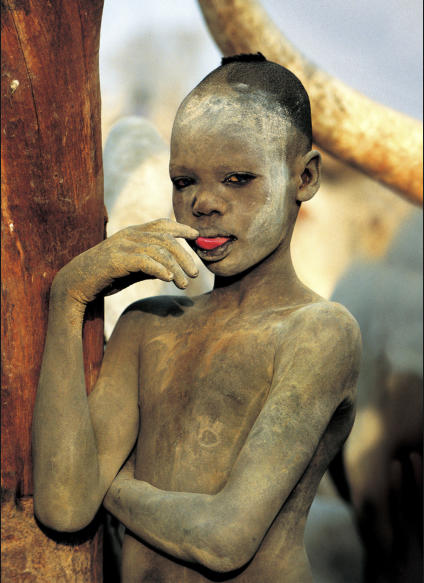
Dinka Child Touching Tongue, South Sudan. Dinka children lick their lips
after drinking milk, but also as an expression of mischievousness, or
even shyness when confronted by our cameras.
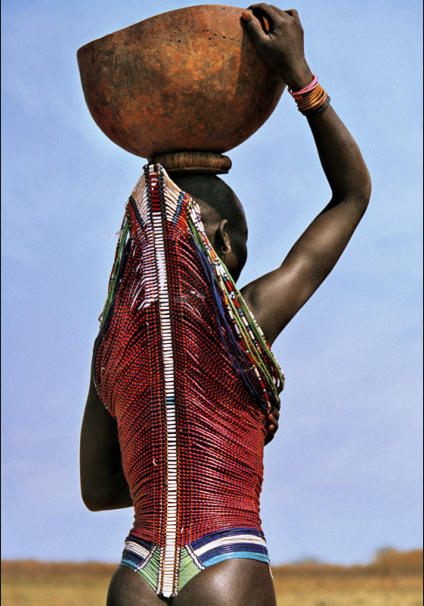
Some women from wealthy families wear beaded corsets. The height of
the corset in this photograph indicates the girl’s parents require over 80
head of cattle in exchange for her hand in marriage.
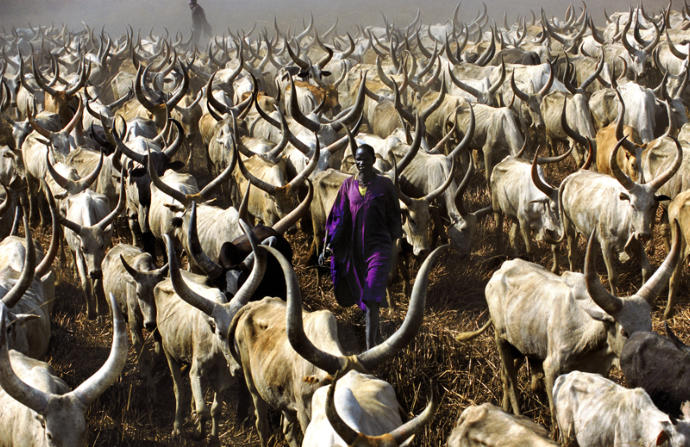
Every morning, hundreds of animals are taken out to graze. White is the dinka’s favorite color for cattle, but they
recognize a myriad of other colors with subtle distinctions and spend hours discussing them.
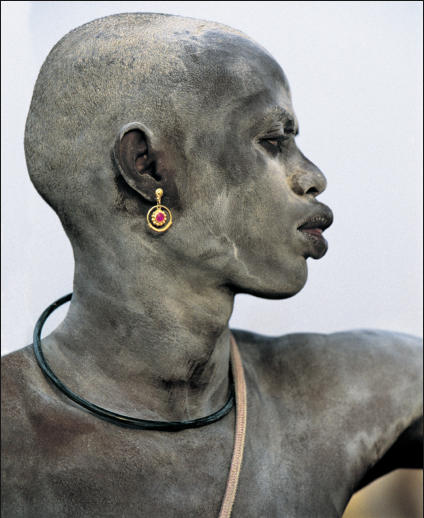
A young Dinka man rubs powdered ash over his body to protect and
beautify his skin. The cattle dung that fuels the fire at night is reduced to
ash by morning and then used as a body make-up.
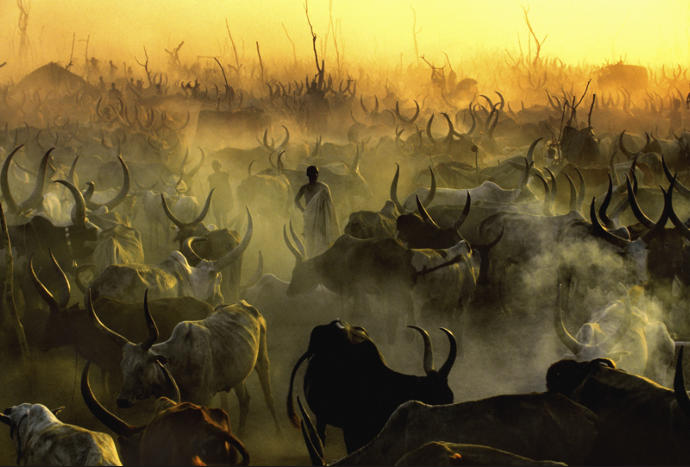
We were struck by the beauty of the cattle camp – the layers of smoke at sunset, the striking silhouettes of cattle with
their lyre shaped horns, and the tall herders moving among them.
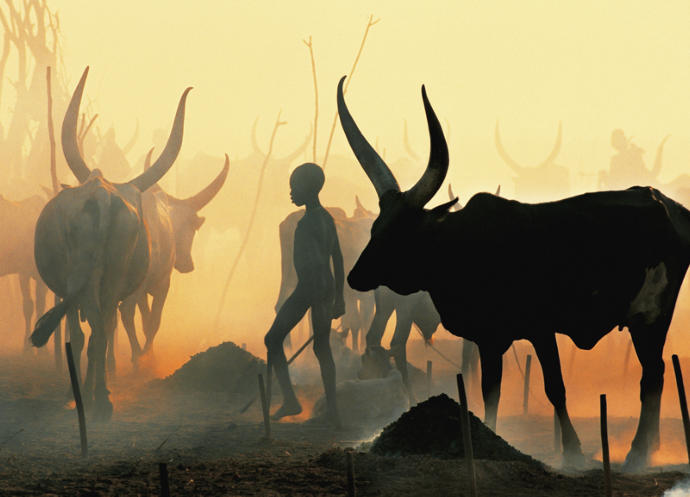
Between November and April every year, the Dinka move their vast herds to dry season cattle camps, to take
advantage of the rich grasslands on either side of the River Nile.
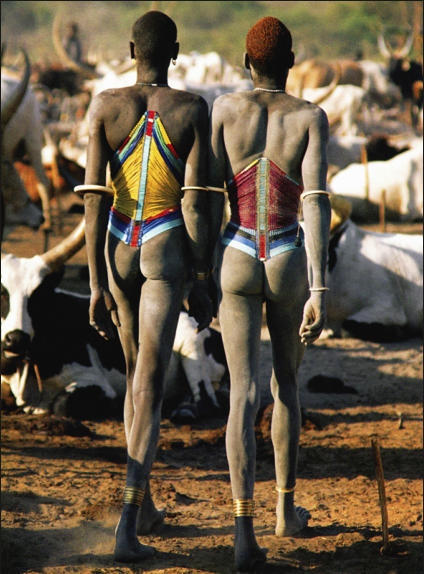
Dinka men often walk hand in hand. This physical touching celebrates
their close bonds as age-mates. Their traditional corsets are color coded
to show their status in life: a red corset indicates a young man 15 to 25
years old, while a yellow one shows he is over 30 years old and ready
for marriage.
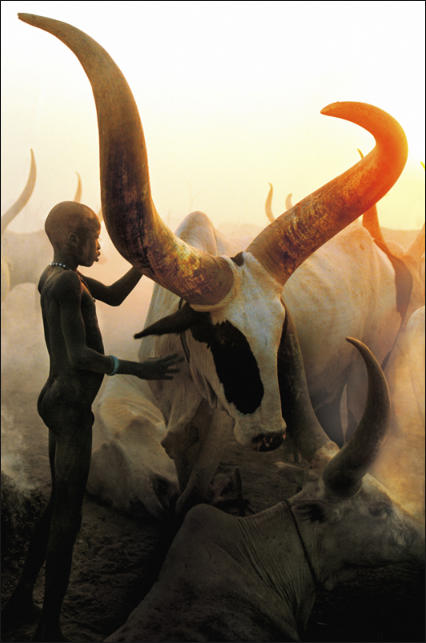
Dinka children lavish endless care and affection on their animals, which
are considered part of the family: male youths are named after favored
oxen in the hope that they will mature with the same strength and beauty.
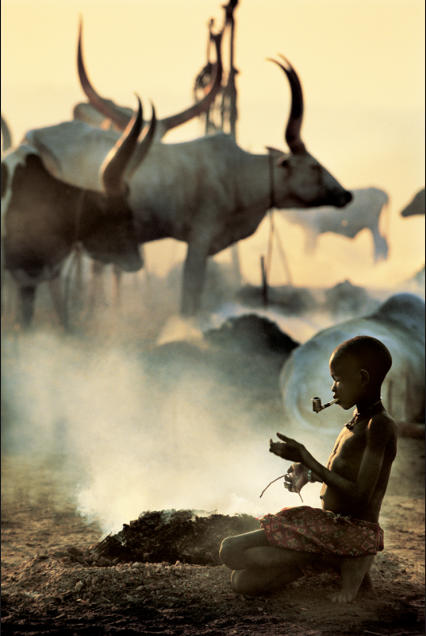
Cattle are of prime importance to the dinka, providing milk to live on,
dung to fuel fires, and hides to sleep on. Seated beside a dung fire, a
young girl assists her mother by lighting a pipe filled with tobacco.
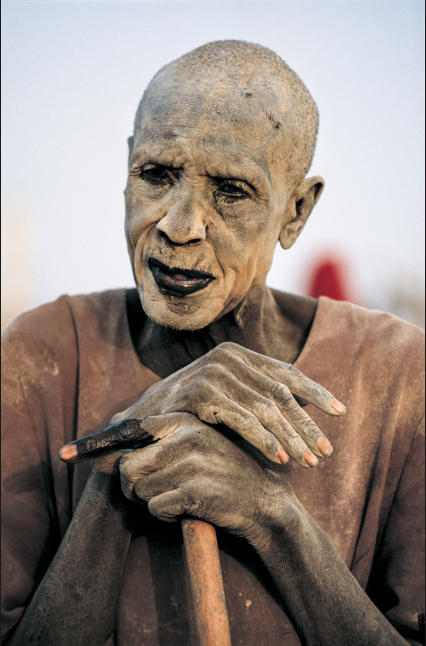
Dinka elders are the guardians of tribal wisdom and tradition. They say
that while one’s cattle represent wealth, all men and women are equal.
To be considered a chief, an elder must be kind, generous, gentle, and
virtuous.
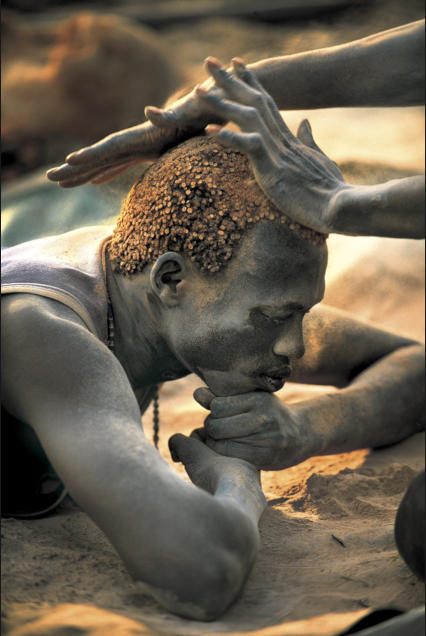
Dinka men bleach their hair with regular applications of cow urine, and
then powder it with ash. Reddish golden hair is considered a sign of
beauty: to leave one’s hair black indicates sadness and mourning.
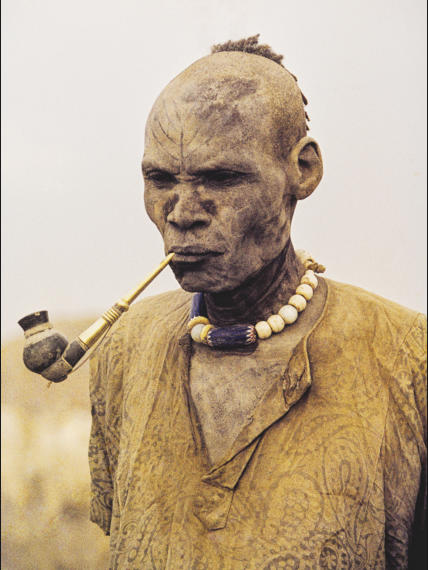
Smoking an elaborate pipe and wearing rare old Venetian beads the face
and body of this Dinka elder are caked with ash. Early explorers to Sudan
refered to the Dinka as Ghostly Giants.

The size and beauty of a man’s corset reflects whether he comes from a
family rich in cattle and can afford a high bride price.
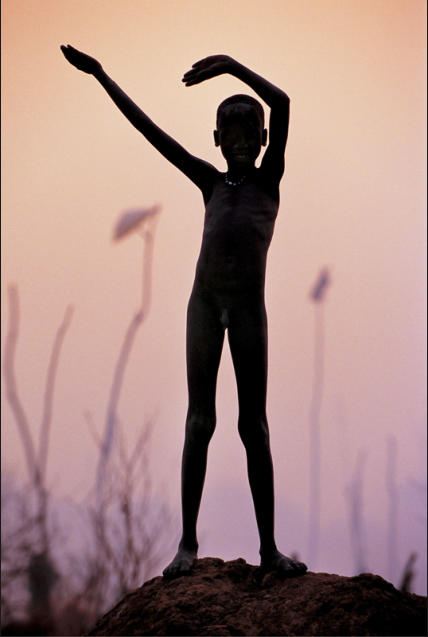
At an early age, children enjoy imitating their favorite cow’s horns with
their arms, in anticipation of receiving a namesake ox during initiation at
puberty.







